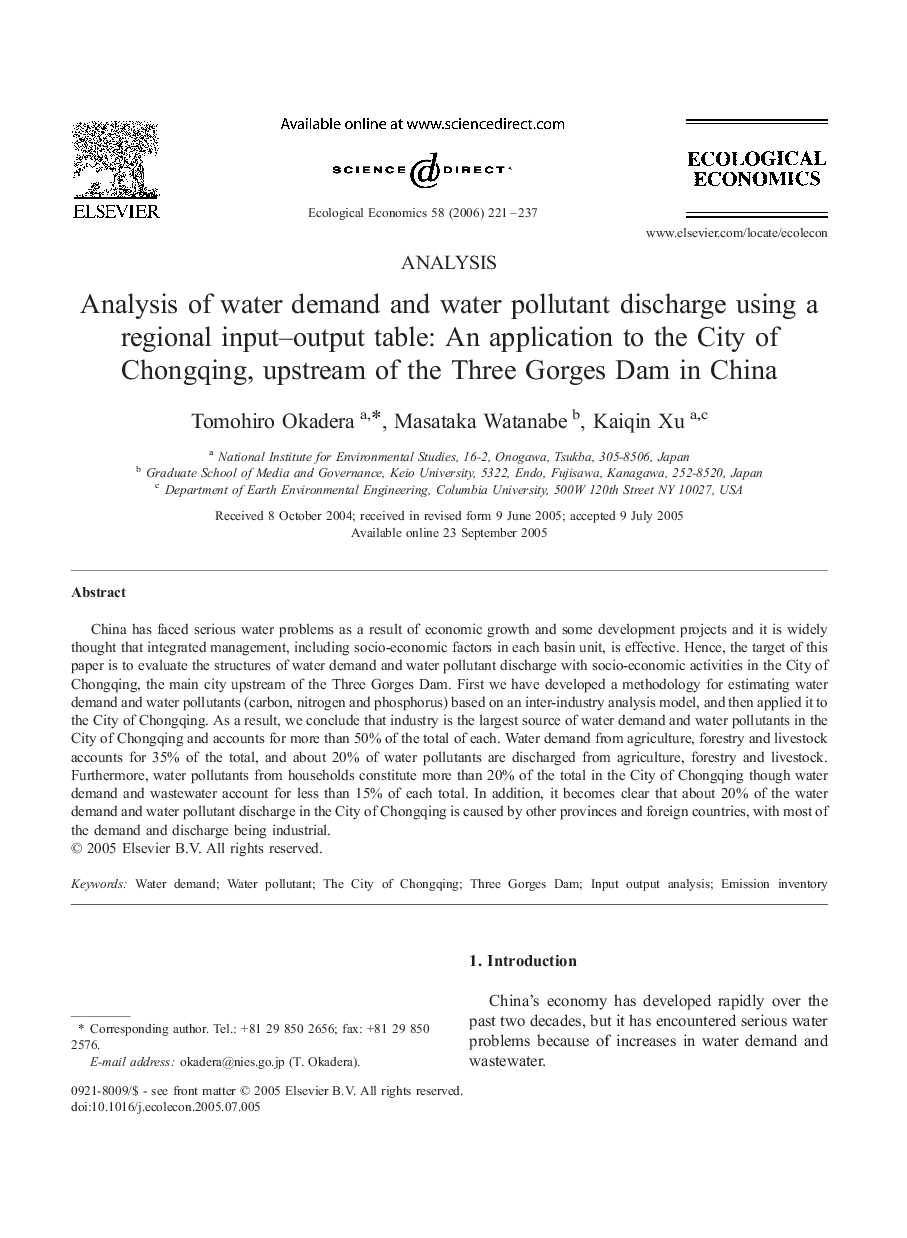| کد مقاله | کد نشریه | سال انتشار | مقاله انگلیسی | نسخه تمام متن |
|---|---|---|---|---|
| 5052510 | 1371169 | 2006 | 17 صفحه PDF | دانلود رایگان |

China has faced serious water problems as a result of economic growth and some development projects and it is widely thought that integrated management, including socio-economic factors in each basin unit, is effective. Hence, the target of this paper is to evaluate the structures of water demand and water pollutant discharge with socio-economic activities in the City of Chongqing, the main city upstream of the Three Gorges Dam. First we have developed a methodology for estimating water demand and water pollutants (carbon, nitrogen and phosphorus) based on an inter-industry analysis model, and then applied it to the City of Chongqing. As a result, we conclude that industry is the largest source of water demand and water pollutants in the City of Chongqing and accounts for more than 50% of the total of each. Water demand from agriculture, forestry and livestock accounts for 35% of the total, and about 20% of water pollutants are discharged from agriculture, forestry and livestock. Furthermore, water pollutants from households constitute more than 20% of the total in the City of Chongqing though water demand and wastewater account for less than 15% of each total. In addition, it becomes clear that about 20% of the water demand and water pollutant discharge in the City of Chongqing is caused by other provinces and foreign countries, with most of the demand and discharge being industrial.
Journal: Ecological Economics - Volume 58, Issue 2, 15 June 2006, Pages 221-237